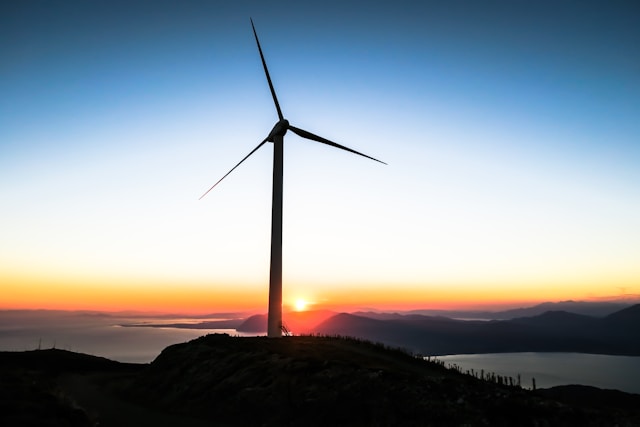The European Union has positioned itself as a global frontrunner in the race toward a low-carbon economy. With rising energy costs, the urgency of climate change, and global competition intensifying, Europe’s ability to balance environmental goals with industrial strength will define its economic future.
The Link Between Competitiveness and Climate Goals
The shift to a low-carbon economy is no longer viewed as a trade-off between growth and sustainability. Instead, it has become a defining factor for industrial competitiveness. Industries that invest in decarbonisation are increasingly seen as leaders, not laggards.
The European Green Deal set the tone by establishing clear targets for climate neutrality by 2050. This vision is reinforced by policies like the Fit for 55 package, which aligns industry with stricter emission reduction goals.
Businesses that adapt early benefit from reduced operational costs, improved energy security, and access to new markets driven by demand for sustainable products.
Why Industry Needs to Transform
The industrial sector is responsible for around one-fifth of the EU’s greenhouse gas emissions. Heavy industries such as steel, cement, and chemicals face the dual challenge of decarbonising production while remaining globally competitive.
The challenge is steep but offers leadership opportunities: developing low-carbon materials, investing in circular production models, and integrating renewable energy.
Innovation as a Driver of Low-Carbon Leadership
Innovation is central to Europe’s ability to compete in a low-carbon world. Without breakthroughs in technology and processes, emissions reductions at the scale required would be difficult to achieve.
The EU has supported industrial innovation through initiatives such as Horizon Europe and the Innovation Fund. These provide financing for projects that accelerate decarbonisation, ranging from hydrogen-based steelmaking to carbon capture and storage. At the same time, public-private partnerships are increasingly shaping the landscape, enabling industries to scale pilot projects into full deployment.
Key Areas of Technological Development
Low-carbon leadership depends on the diffusion of technologies that are both scalable and cost-effective. Some of the most promising areas include:
- Renewable hydrogen for heavy industry
- Electrification of heat-intensive processes
- Advanced recycling and reuse of materials
- Energy efficiency through digitalisation and automation
These technologies are tools for emission reduction and catalysts for new business models. Europe’s first movers stand to secure long-term advantages in global markets.
Building Sustainable Infrastructure for Competitiveness
Green competitiveness is not confined to factories and laboratories. Infrastructure forms the backbone of industrial transformation. Even the most innovative technologies cannot deliver their full potential without resilient and sustainable systems.
Energy Systems for the Future
The energy transition requires investment in grids, renewable capacity, and storage solutions. Europe’s electricity demand will grow as industries electrify, requiring flexible systems that balance intermittent renewable supply.
A modernised grid, cross-border interconnections, and smart energy management will be critical to avoiding bottlenecks and ensuring stable energy access for industries.
Transport and Logistics in a Low-Carbon Economy
Decarbonising transport is equally vital. Rail freight corridors, electric mobility, and low-emission shipping routes can reduce the carbon intensity of supply chains. Investments in transport infrastructure also improve competitiveness by making cross-border trade faster, cleaner, and more reliable.
Policy and Global Positioning
Europe’s regulatory framework sets ambitious standards, but the global context cannot be ignored. Industries must remain competitive against countries with less stringent climate policies. This raises questions about carbon leakage and fair competition.
The Role of the Carbon Border Adjustment Mechanism (CBAM)
The CBAM aims to level the playing field by imposing carbon costs on imports from countries with weaker climate regulations. While controversial, it is designed to prevent European industries from relocating production abroad. If implemented effectively, it could both protect European jobs and incentivise global partners to raise their climate ambitions.
Collaboration Beyond Borders
Europe cannot succeed in isolation. Strategic alliances with countries investing in clean energy and global supply chain partnerships are essential. Cooperation in technology development, resource security, and trade agreements will reinforce Europe’s leadership in shaping low-carbon standards worldwide.
Conclusion: Turning Transition into Opportunity
The path to low-carbon competitiveness is complex but filled with opportunity. By combining regulatory ambition with industrial innovation, Europe can chart a course that strengthens both climate action and economic growth. Success will depend on the ability to align energy systems, infrastructure, and global partnerships with the needs of industry.
Green competitiveness is ultimately about resilience. Those who invest in low-carbon solutions today will secure tomorrow’s markets. Europe has the tools, the talent, and the political will to lead, transforming transition into a sustainable engine for prosperity.

